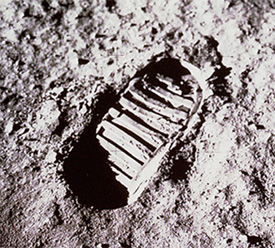First-Hand:50th Anniversary of Apollo Lunar Landing & 50 years in Space Research: A Personal Reminiscence

Submitted by Clive Dyer
July 1969 was a pivotal moment in my life. I had graduated in Natural Sciences from Cambridge in June and was inspired into a lifelong career in space science and radiation effects by the Apollo missions. I was spending a summer earning some much needed cash before taking up a research studentship in the Cosmic Ray Group of the Blackett Laboratory, Imperial College London. The day of the landing I was up at an unearthly hour to watch the giant step for mankind before setting off for work on the first train of the day. Little did I know that 3 years later I would be working on Apollo data myself. During my thesis work I discovered that the gamma ray spectrometers carried on Apollos 15 and 16 were contaminated by induced radioactivity from cosmic rays. This was producing a feature in the background spectrum around 1 MeV that was being interpreted as red-shifted radiation from matter-antimatter annihilation. I was subsequently invited on a NAS/NRC Research Associateship to work on correcting the data at NASA/GSFC from 1973 to 1976. On return to the UK, primarily working in the Space Department at the Royal Aircraft Establishment Farnborough, I kept up a lifelong collaboration with US scientists flying experiments on some 10 space shuttle missions and many other NASA and DoD spacecraft. I have been a regular attendee at IEEE Nuclear and Space Radiation Effects Conferences and received the Nuclear and Plasma Sciences Society Radiation Effects Award in 2010. Three years later I used the award to attend the 50th anniversary meeting of NSREC in San Francisco. I remain active in radiation effects in aircraft and spacecraft and we are looking forward to the launch of the Living with a Star Space Environment Test Bed carrying our UK radiation monitor CREDANCE sometime later this year.
Back to Human Space Travel Primary Sources